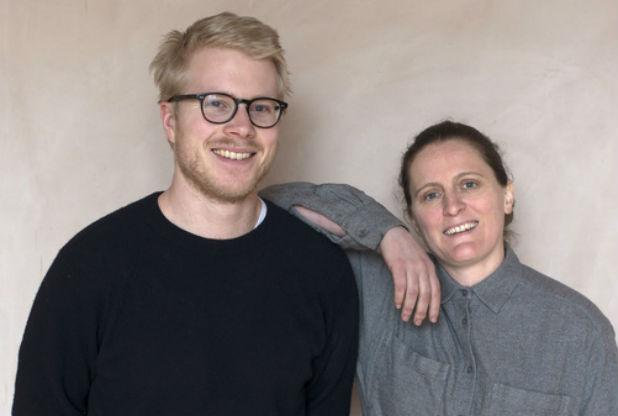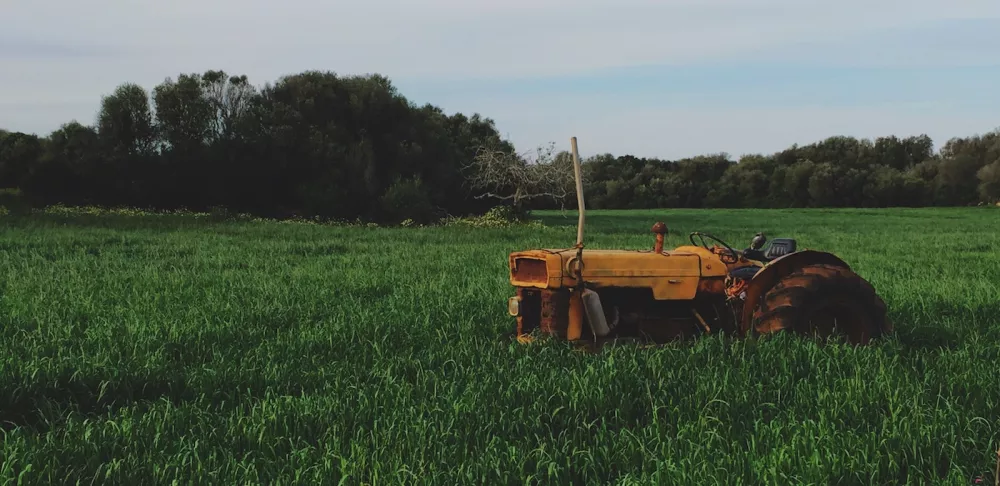In this interview, ICE’s Director of Sustainability Bill Telepan speaks with Chef April Bloomfield, the British-born, NYC-based chef behind The Spotted Pig, The Breslin and The John Dory Oyster Bar. Bill and April talk about Coombeshead Farm, the farm in the heart of Cornwall, England that April owns and runs with Chef Tom Adams, chef-owner of the London restaurant, Pitt Cue.
Don’t let the name mislead you — Coombeshead is more ecosystem than farm, or more precisely, a farm, guesthouse, restaurant and bakery that runs largely off the fat of the land, and animals raised on that land. Bill and April chat about her first brush with farming, the benefits of producing your own food and the importance of getting dirty sometimes.

Your food is so inspired by the seasons. When you came up with The Spotted Pig, what amazed me was how there were great ingredients in a casual setting and it felt so easy. I understand it was not easy, but it felt that way. I wanted to first ask you about growing up — did you have any experience with farming? What was food like at your home?
To be honest, we did get some stuff from farm stands, but mostly only when we were on holiday — we’d go pick peas and eat them raw while hiking. My mom used some fresh vegetables but as she got older and we got a bit more teenager-y, she wanted to cook things faster and more simply. So we did go through a phase of having a ton of frozen vegetables. I didn’t come from an affluent family. I came from a very humble, modest family, so it was based on price too.
My first experience with a farm was when I went to a farm in Devon, England called Nethercott Farm. It was basically a farm that was able to put up eight to 12-year-olds for a weeklong visit. It was children from the inner city who wouldn’t necessarily get to experience the countryside. I spent a week there and I remember it very fondly. I got to muck out cows and walk in the fields and feed the chickens and groom the horses. It felt very good and very healthy and hearty — to eat eggs and bacon and good products that were made on this farm.
That must have been a great experience as a kid.
That was my first experience with farms. My mom would take us strawberry picking, too. She would teach us to grab a strawberry, make sure there were no holes in it and give it a little squish. Sometimes my mom would grow spring onions and a few tomatoes and we’d have salads and sandwiches in the summer. It was very simple stuff, really.
Tell me about the farm you have today.
A couple of years ago I met this great guy named Tom Adams. He was a young chef and he had his own restaurant called Pitt Cue in London and I was there for my book tour — I went back to England for a wee while, and we just hit it off. We stayed in touch for the next four years. We’d meet for a drink and talk about our lives and what our aspirations were. He really wanted to come and live in Cornwall. He was already producing Mangalitsa pigs for his restaurant. He was super focused and super honed in on products, as was I.
I had been dreaming about having a farm. I had told him I was looking for a farm upstate and I couldn’t find anything. One day he called me and said he found a farm and asked if I’d like to come see it. I took a flight to meet him and we took the train and drove to see the farm. It was a pretty magical place. I think the ultimate goal for having the farm was to be in control of the product — to dial in the things we like about each type of product. It’s the attention to detail — the flavors and the textures.
There’s nothing better than grabbing a beet from the ground, gently washing it and throwing it straight in the oven. That beet’s at its peak. As chefs we’re always looking for that. We’re always looking for the best quality product. It’s what drives me for sure. I know it’s what drives Tom. When we don’t get product like that it’s depressing — it’s a bit soul crushing.
What were some of the highlights this year?
Definitely all of the fava beans. It’s great to plant a fava bean and be able to pick them in a couple months. Being able to walk out to the garden and pick herbs and leaves before service and not mask them too much and let them shine — that’s the highlight.
You also get to be in the open. You’re out there with the wildlife, the birds and the bees. Sometimes it’s just pissing down with rain too. It’s not all butterflies and rabbits. The harvesting and tasting, and figuring out what you’re doing to do with the product is exciting.
How do you decide what you’re going to grow?
We’re still trying to experiment. We’ve planted corn this year that we didn’t plan last year. It was just a small amount, but it’s trial and error. I really loved it and want to grow corn again next year. I’m sure there will be many things that we’ll want to try — that’s the fun part.
Are you also doing livestock?
Yes, we have a couple of pigs that just went to slaughter. I wasn’t there unfortunately but Tom did this amazing pig slaughter with a bunch of chefs. He had two Mangalitsa that he slaughtered and he’s going to make charcuterie from them and fresh sausage for breakfast. We have a few sheep that are grazing. They’re not ours per se: we’re renting them and letting them graze on our land, so they cut the grass. They’re like nature’s lawnmowers.
https://www.instagram.com/p/BG_1OI0ypVL/?taken-by=aprilbloomfield
Obviously you have a passion for the connection to the earth. Can you teach someone to have that passion or does it only come through experience and exposure?
I think a lot of my learning came from my experience at the farm and getting dirty and feeling connected to the land. When I was 12 and went to [Nethercott Farm], it was a gentle way of learning. I still remember the things they taught us about looking after the countryside. I didn’t quite realize that was something I was drawn to until seven or eight years ago, even though I had already been buying from farmers’ markets for many years. I worked at Chez Panisse and we got lots of stuff from farmers who would deliver.
Sometimes we’d go see the farm and meet the farmer. I remember meeting Bob Canard who supplied Chez Panisse — that was a very moving experience for me, him talking about the soil and how he tended to the soil and how he nurtured it and what he put in to make it great. He made me cry. That’s pretty amazing when you can move people like that. It was done in the gentlest way and I think when you do it like that, it’s more effective.
With ICE’s hydroponic garden, we want students to be able to plant something and watch it grow and harvest. Why do you think students should learn about farming, if it’s available to them?
It’s exciting for kids to be able to do something from start to finish and to see the progression. Even sprouting seeds — how amazing is it if they can sprout some seeds, like grains and lentils, and actually see them grow? And then you get to eat them. When I was young, I think I must have been in junior school, we sprinkled cress seeds on cotton wall and we watched the cress seeds grow. That’s super exciting.
Kids are like sponges. They’re inquisitive and they ask questions. I think it’s a great age to capture their imagination. Even if it takes another 10 years for them to realize what they want to do, you’ve planted that seed early. Even me, it’s taken this long for me to realize that this is something I really want to do, and this is how I want to live my life. I’m older now and that seed was planted when I was 12. It takes time to nurture it.
Interested in culinary training with an eye toward sustainability? Learn more about ICE’s career training programs.




